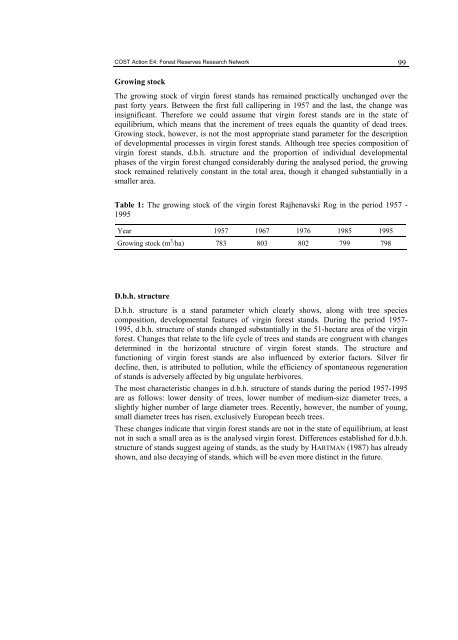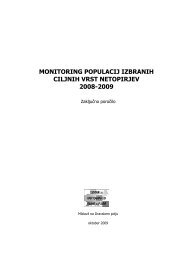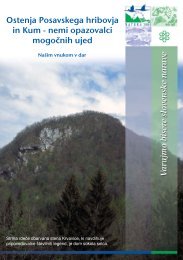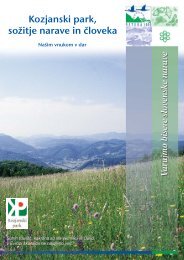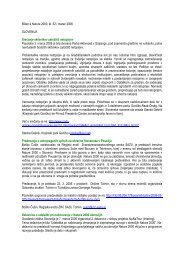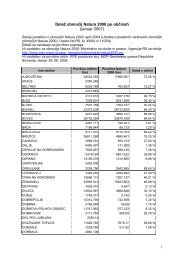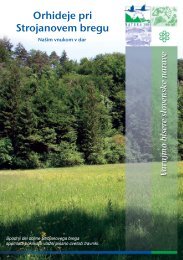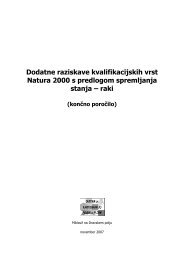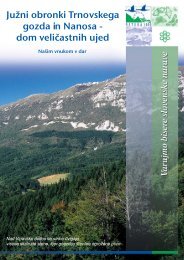VIRGIN FORESTS AND FOREST RESERVES IN ... - Natura 2000
VIRGIN FORESTS AND FOREST RESERVES IN ... - Natura 2000
VIRGIN FORESTS AND FOREST RESERVES IN ... - Natura 2000
You also want an ePaper? Increase the reach of your titles
YUMPU automatically turns print PDFs into web optimized ePapers that Google loves.
COST Action E4: Forest Reserves Research Network 99<br />
Growing stock<br />
The growing stock of virgin forest stands has remained practically unchanged over the<br />
past forty years. Between the first full callipering in 1957 and the last, the change was<br />
insignificant. Therefore we could assume that virgin forest stands are in the state of<br />
equilibrium, which means that the increment of trees equals the quantity of dead trees.<br />
Growing stock, however, is not the most appropriate stand parameter for the description<br />
of developmental processes in virgin forest stands. Although tree species composition of<br />
virgin forest stands, d.b.h. structure and the proportion of individual developmental<br />
phases of the virgin forest changed considerably during the analysed period, the growing<br />
stock remained relatively constant in the total area, though it changed substantially in a<br />
smaller area.<br />
Table 1: The growing stock of the virgin forest Rajhenavski Rog in the period 1957 -<br />
1995<br />
Year 1957 1967 1976 1985 1995<br />
Growing stock (m 3 /ha) 783 803 802 799 798<br />
D.b.h. structure<br />
D.b.h. structure is a stand parameter which clearly shows, along with tree species<br />
composition, developmental features of virgin forest stands. During the period 1957-<br />
1995, d.b.h. structure of stands changed substantially in the 51-hectare area of the virgin<br />
forest. Changes that relate to the life cycle of trees and stands are congruent with changes<br />
determined in the horizontal structure of virgin forest stands. The structure and<br />
functioning of virgin forest stands are also influenced by exterior factors. Silver fir<br />
decline, then, is attributed to pollution, while the efficiency of spontaneous regeneration<br />
of stands is adversely affected by big ungulate herbivores.<br />
The most characteristic changes in d.b.h. structure of stands during the period 1957-1995<br />
are as follows: lower density of trees, lower number of medium-size diameter trees, a<br />
slightly higher number of large diameter trees. Recently, however, the number of young,<br />
small diameter trees has risen, exclusively European beech trees.<br />
These changes indicate that virgin forest stands are not in the state of equilibrium, at least<br />
not in such a small area as is the analysed virgin forest. Differences established for d.b.h.<br />
structure of stands suggest ageing of stands, as the study by HARTMAN (1987) has already<br />
shown, and also decaying of stands, which will be even more distinct in the future.


